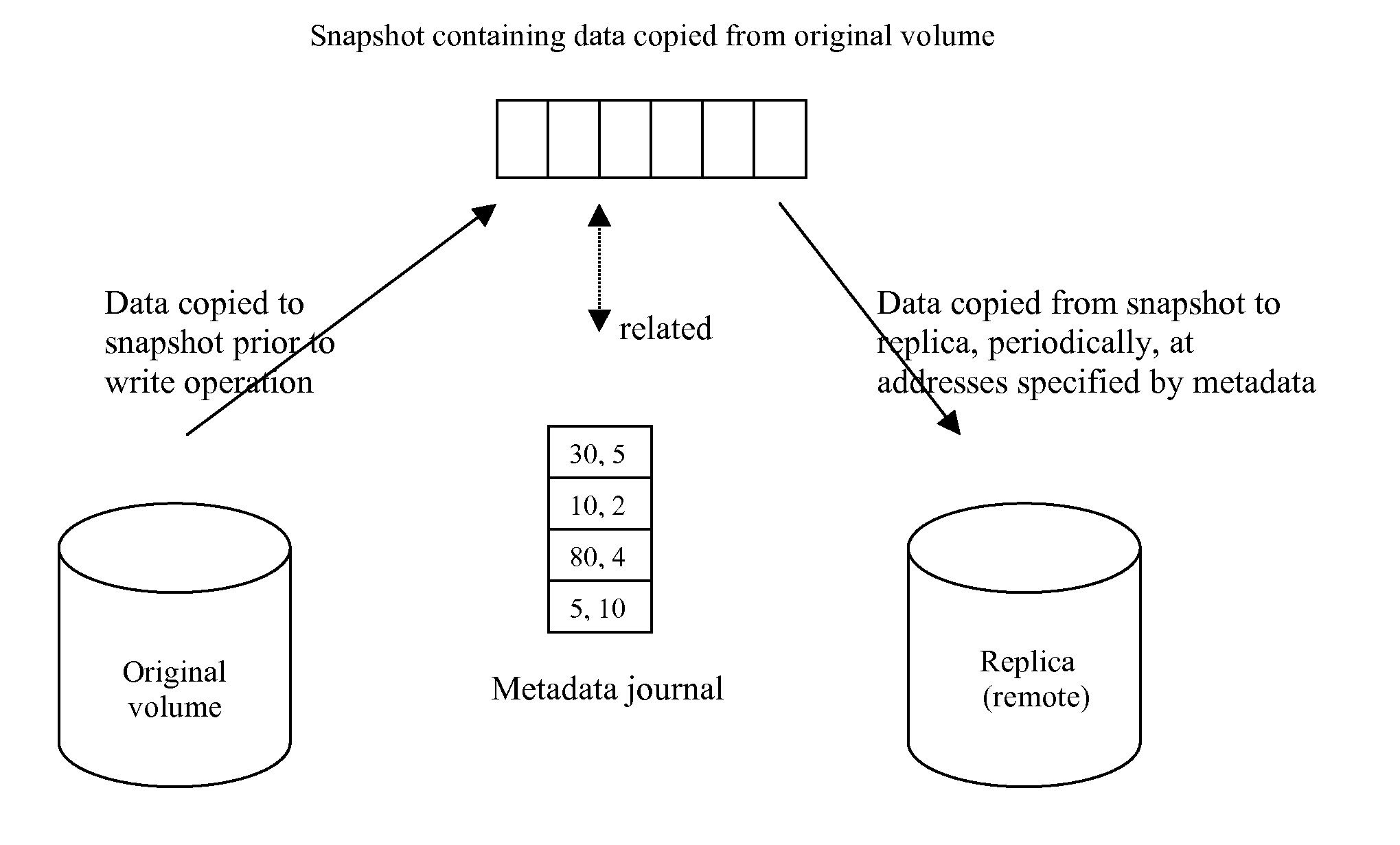Method and System for Data Replication
a data replication and data technology, applied in the field of data replication, can solve the problems of data loss, catastrophic data loss, and long time-consuming,
- Summary
- Abstract
- Description
- Claims
- Application Information
AI Technical Summary
Benefits of technology
Problems solved by technology
Method used
Image
Examples
Embodiment Construction
[0048]Turning to FIG. 1, a data volume is stored on a local storage device and a replica of that data volume is stored on a physically remote device. The local and remote storage devices are random-access block storage devices. A block device, such as a hard drive, is one which reads and writes data in blocks of a predetermined size. Each block is identified by a unique address ranging sequentially from 0 to N−1, where N is the number of blocks on the disk. A read / write head is positioned on the end of an arm provided just above the surface of the disk, the arm being able to move in and out over the surface of the disk as it rotates underneath the head.
[0049]Typically, a hard drive will consist of a stack of hard disks with arms (and their respective read / write heads) provided between each disk. If a block of data is to be accessed (read from or written to the disk), the head must be positioned over the relevant block. If the block is some distance away on the disk from the current ...
PUM
| Property | Measurement | Unit |
|---|---|---|
| data volume | aaaaa | aaaaa |
| volume | aaaaa | aaaaa |
| length of time | aaaaa | aaaaa |
Abstract
Description
Claims
Application Information
 Login to View More
Login to View More - R&D
- Intellectual Property
- Life Sciences
- Materials
- Tech Scout
- Unparalleled Data Quality
- Higher Quality Content
- 60% Fewer Hallucinations
Browse by: Latest US Patents, China's latest patents, Technical Efficacy Thesaurus, Application Domain, Technology Topic, Popular Technical Reports.
© 2025 PatSnap. All rights reserved.Legal|Privacy policy|Modern Slavery Act Transparency Statement|Sitemap|About US| Contact US: help@patsnap.com


